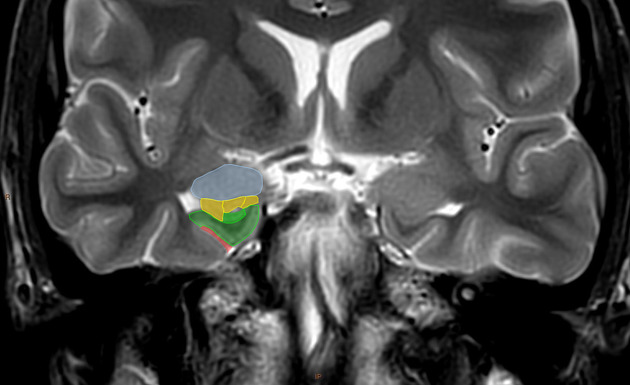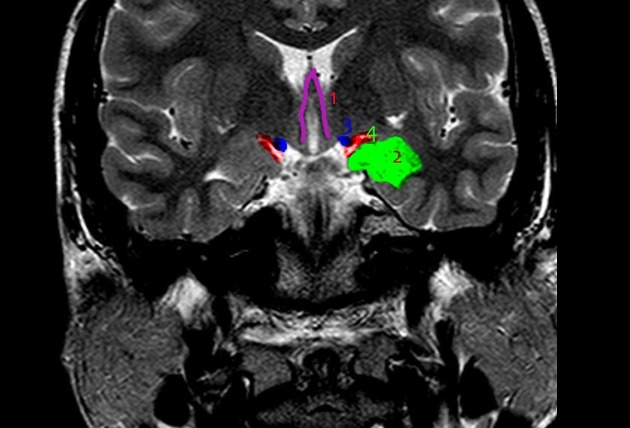The amygdala (plural: amygdalae) is a very well studied part of the limbic system and forms part of the mesial temporal lobe.
Gross anatomy
The amygdala is a complex grey matter structure located anterior and superior to the temporal horn of the lateral ventricle and head of the hippocampus. The anterior extension of the amygdala is identified by the entorhinal sulcus.
Both the amygdala and the hippocampus are derived from the telencephalon. In 1997, Gloor classified the amygdala into three large groups of nuclei 2,3:
- basolateral
- corticomedial (phylogenetically the oldest 4)
- central group
Connections
Output fibers
The output fibers of the amygdala are mainly through two efferent fiber systems:
- stria terminalis
- ventral amygdalofugal pathway
The stria terminalis has a semicircular course in the body of the lateral ventricle. The level of the anterior commissure is a very important anatomical landmark because the stria terminalis splits into three parts:
- precommissural part
- commissural part
- postcommissural part
The precommissural fibers end in the septal region, and the postcommissural fibers end in the nucleus of stria terminalis. The commissural fibers connect the contralateral amygdala via the anterior commissure.
The ventral amygdalofugal pathway arises from the dorsomedial aspect of the amygdala, and courses medially through substantia innominata, anterior perforated substance, and fibers spread into the cerebral cortex, brainstem, mediodorsal thalamus, and hypothalamus. Direct efferent fibers project to the entorhinal cortex as well as the hippocampus 2.
Input fibers
The input fibers to the amygdala are mainly represented by sensory fibers, which transfer information from numerous subcortical regions such as the hypothalamus, basal ganglia, septal region, and autonomic centers in the brainstem. Both the ventral amygdalofugal pathway and the stria terminals carry afferent and efferent fibers together. Some input fibers project to the amygdala along the olfactory stria, and directly from the temporal lobe.
Reciprocal fibers
The basal nucleus of Meynert, and the nucleus of the diagonal band project reciprocally to the amygdala along the ventral amygdalofugal pathway 1,2.
Relations
- superiorly: partly continuous with the inferomedial aspect of the claustrum
- laterally: optic tract
- posteriorly: hippocampus, connected to the tail of the caudate nucleus
History and etymology
Amygdala is derived from the Greek amugdalē, meaning almond, as it is almond-shaped.






 Unable to process the form. Check for errors and try again.
Unable to process the form. Check for errors and try again.